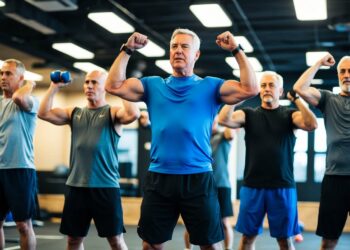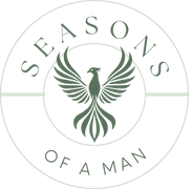Staying active after 50 can really boost your health, but it brings some new risks if you’re not careful. The best way to avoid common injuries when getting fit after 50 is to warm up, listen to your body, start slow, and use proper form.
These small habits help you make progress without painful setbacks.
Your body changes as you age, so joints, balance, and core strength matter more than ever. Choosing safe exercises and building up your strength gradually can make a big difference.
Don’t forget to take time for recovery each week. Want to feel your best and stay injury-free? There are easy steps you can follow to keep moving with confidence.
Understanding Age-Related Injury Risks
As you get older, your body goes through a lot of changes that can make injuries more likely. Knowing what to expect—and what to watch out for—can help you stay safe and active.
How the Body Changes After 50
After 50, muscles often feel weaker and joints get stiffer. You might notice muscle mass and bone density decreasing, which can slow you down and make falls more likely.
Ligaments and tendons lose flexibility, so stretching becomes extra important. Reaction time and balance can get worse, which just adds to the risk of workout injuries.
Injuries also heal more slowly, so a small issue can turn into something bigger if you ignore it. By understanding these changes, you can adjust your fitness plan to prevent injuries.
Common Injuries in Older Adults
You’re more likely to deal with strained muscles, sprains, and joint pain. The knees, shoulders, and lower back are the usual suspects.
Some folks get tendonitis, where a tendon gets swollen and sore from overuse. Rotator cuff tears and hip fractures also show up more after 50.
Even a simple fall can break a bone, especially if your bone density’s low. If soreness or stiffness lasts more than a few days, see it as a warning sign.
The Importance of Prevention
Make injury prevention your top priority. Start every workout with a gentle warm-up to slowly increase your heart rate and prep your muscles.
Stretch before and after activity to keep flexible and lower your risk of strains. Choose exercises that fit your current fitness level.
If you haven’t exercised in a while, start with low-impact activities like walking or swimming. Let your body adapt and ramp up intensity gradually.
Listen to your body’s signals—like pain or unusual fatigue—and rest when you need to. Use good form and don’t push through discomfort.
If you’re not sure where to begin, consider working with a qualified fitness trainer who can show you safe techniques.
Fundamental Strategies for Injury Prevention
Staying injury-free isn’t just about being careful—it’s about building a routine that keeps your body strong and ready for action. Small, smart steps can lower your risk of getting hurt at any age.
The Role of Warm-Up and Cool-Down
Warming up gets your heart, muscles, and joints ready for activity. Begin each workout with light movement like walking or biking for five to ten minutes.
This gently raises your heart rate and gets blood flowing. Add dynamic movements like arm circles or leg swings to loosen up.
If you skip your warm-up, you set yourself up for strains or pulls. Always cool down after your workout by slowing your pace—think walking slowly or gentle stretching for five to ten minutes.
Cooling down helps your heart rate return to normal and might even reduce soreness.
| Activity | Warm-Up Example | Cool-Down Example |
|---|---|---|
| Walking | March in place | Gentle stretching |
| Cycling | Slow pedaling | Easy pedal, stretch |
| Strength training | Arm circles, squats | Stretch, deep breathe |
Incorporating Proper Stretching Techniques
Stretching keeps your muscles flexible and your joints moving well. Flexible muscles are less likely to get hurt.
Try gentle stretching after your warm-up or at the end of your workout while your muscles are still warm. Focus on the big muscle groups: calves, thighs, hips, lower back, neck, and shoulders.
Hold each stretch for 15 to 30 seconds. Don’t bounce or force it—stretching shouldn’t hurt.
Types of stretching:
- Static stretching: Hold a position without moving.
- Dynamic stretching: Move gently through your range of motion.
Mix both styles to support healthy movement and comfort while you exercise.
Mastering Proper Form in Every Exercise
Good form is key for staying safe and getting results. Bad posture or rushed moves can mess up your joints or pull a muscle.
Tune in to how your body feels as you move. If something feels awkward or hurts, stop and check your form.
Ask a fitness coach for help if you’re unsure about the right technique. If you lift weights, start light to master the move before going heavier.
Don’t swing or jerk the weights—use slow, steady motions. Keep your core engaged and move with control.
Quick tips:
- Stand tall: shoulders back, chest up
- Keep a slight bend: in your knees and elbows
- Move smoothly: don’t rush through anything
Benefits of Balance and Coordination Training
Balance matters more as you get older. Good balance can help you avoid falls and other injuries, whether you’re at the gym or just living life.
Practice balance training to stay steady on your feet. Try standing on one leg, walking heel-to-toe, or using a balance board a few times a week.
Coordination exercises—like stepping over cones, catching a ball, or even dancing—help your body react quickly and safely. They can keep you from stumbling or slipping.
Balance activities to try:
- Stand on one foot for 30 seconds
- Walk in a straight line, heel to toe
- Practice gentle yoga or tai chi
Keeping your balance skills sharp is a practical way to dodge a lot of common injuries.
Smart Approaches to Training and Equipment
Safe, effective workouts after 50 really come down to using the right techniques, gear, and support. Paying attention to how you train—and what you train with—can help you avoid the usual exercise injuries.
Starting Strength and Resistance Training Safely
When you start strength or resistance training, pick light weights or resistance bands. This lets you learn the right form and keeps your joints from taking too much stress.
Focus on slow, controlled movements instead of heavy lifting. Give yourself rest days between sessions so your muscles and joints can recover.
Work different muscle groups on different days. For example, do legs one day and upper body another to prevent overuse injuries and keep things balanced.
Always start with a warm-up, like five minutes of walking or gentle stretching. That gets your muscles ready and lowers your risk of strains or pulls.
Choosing the Right Running Shoes and Gear
Wearing the right shoes protects your feet, knees, and hips. Pick running shoes that fit your foot type and the activity you’re doing.
Shoe stores with fitting services can help you find a good pair. Replace your shoes every 300 to 500 miles or when you see the soles wearing out.
Old shoes can cause pain or injury. Consider other gear like moisture-wicking shirts or cushioned socks for comfort.
If your doctor or trainer suggests it, use supportive equipment like knee braces. Pay attention to how your body feels during and after exercise—if something hurts, check your gear first.
When to Work With a Personal Trainer
A certified personal trainer can build a safe program just for you—your age, fitness level, and any health issues. Trainers teach you the correct way to lift, stretch, or use gym equipment.
They help you set realistic goals and track progress, which can boost motivation and cut your risk of injuries from bad technique.
Ask about a trainer’s credentials and experience with older adults before signing up. Good trainers listen and adjust plans as you improve or if you feel pain.
If you’re new to exercise or coming back after an injury, working with a trainer is a smart way to protect yourself and feel confident.










